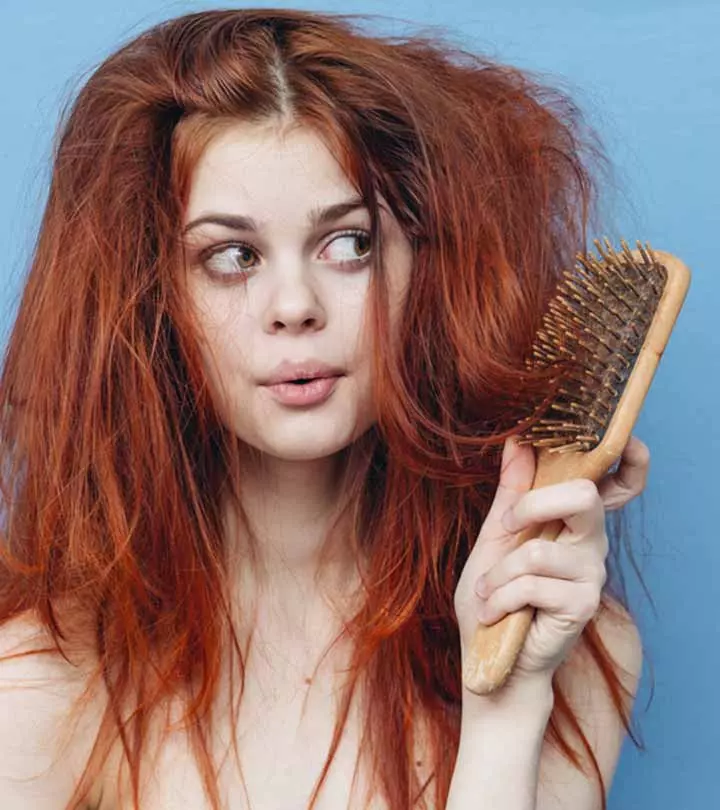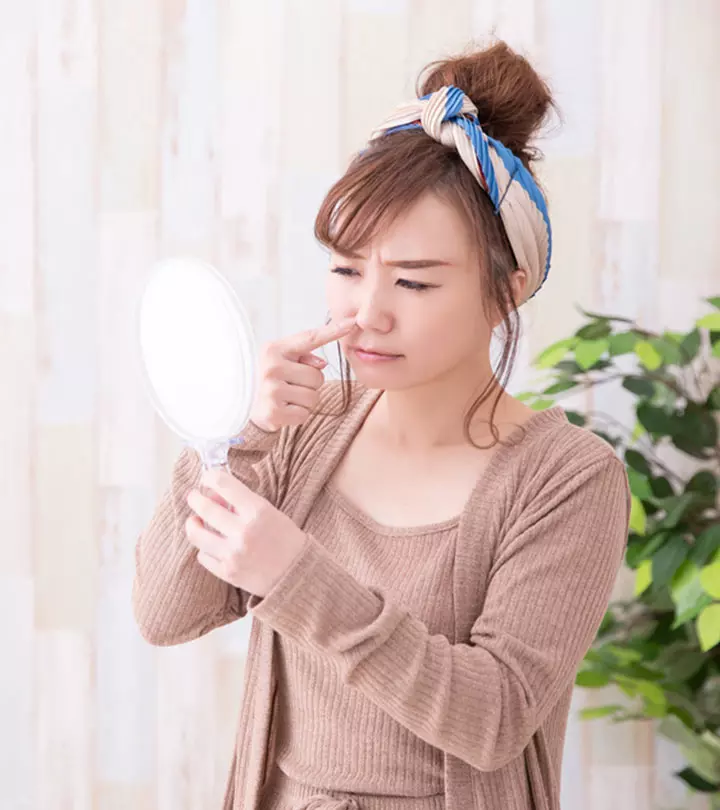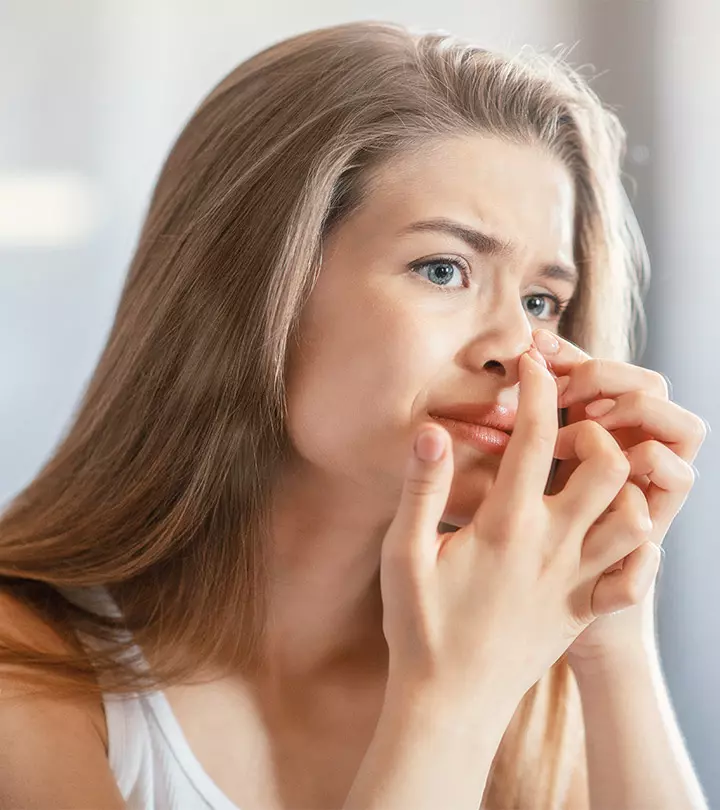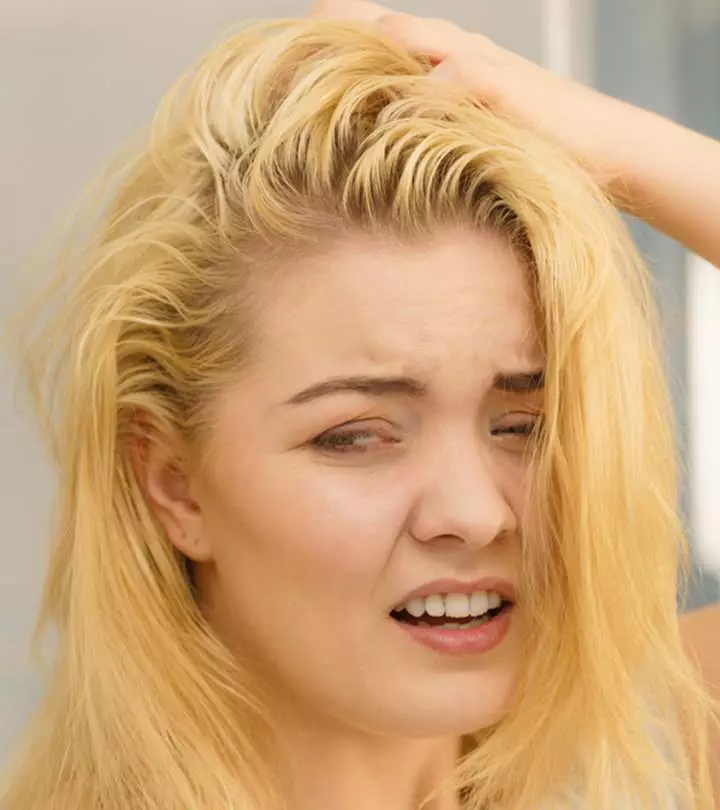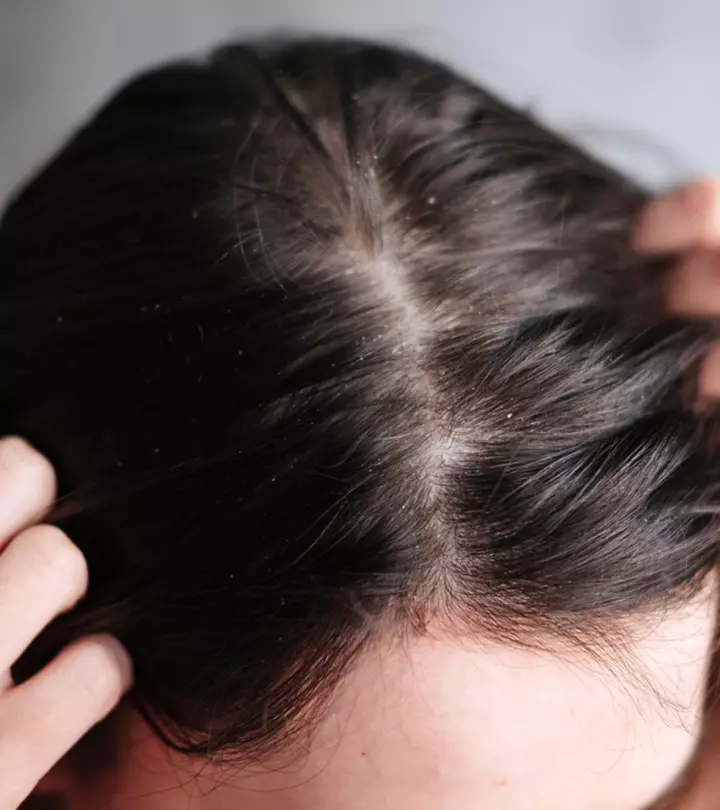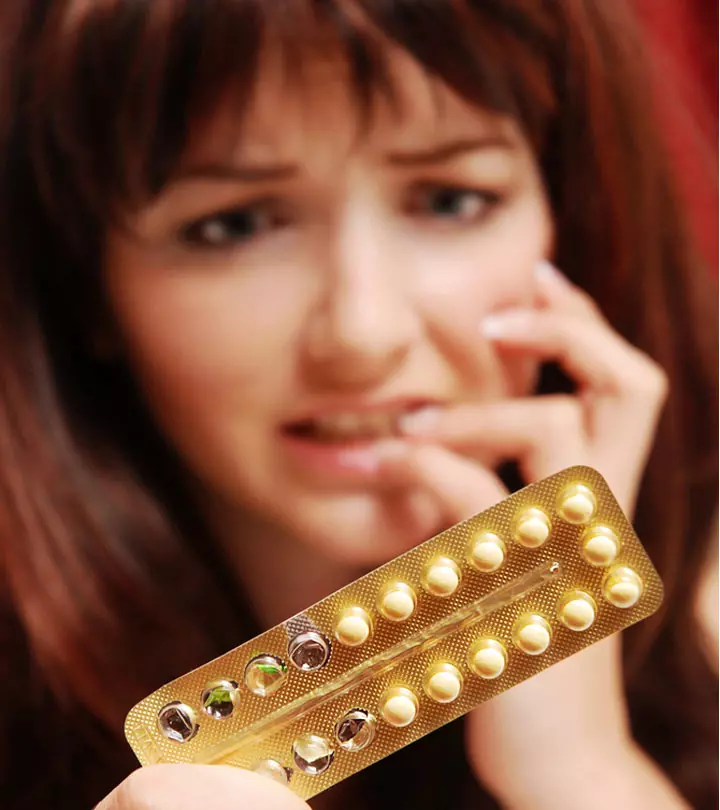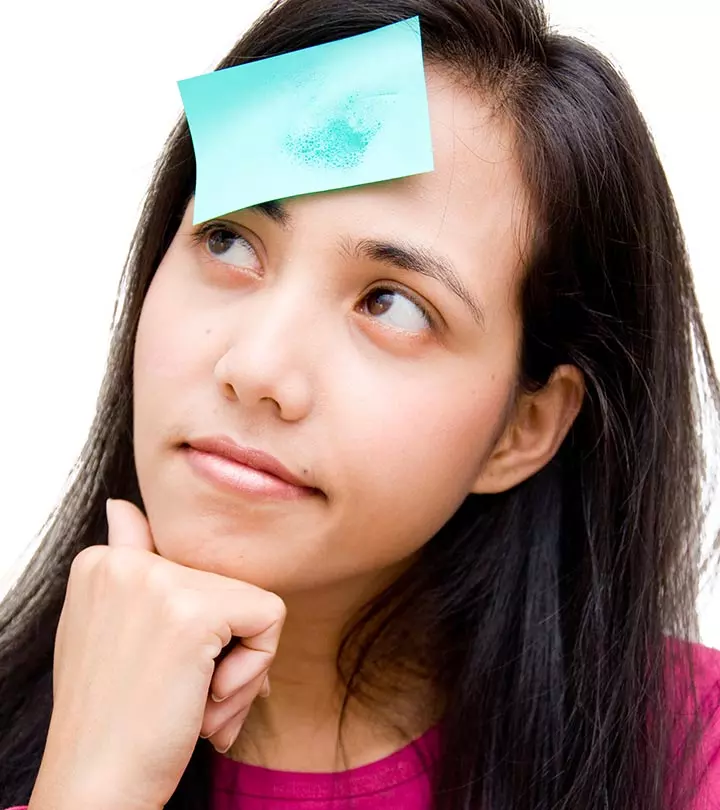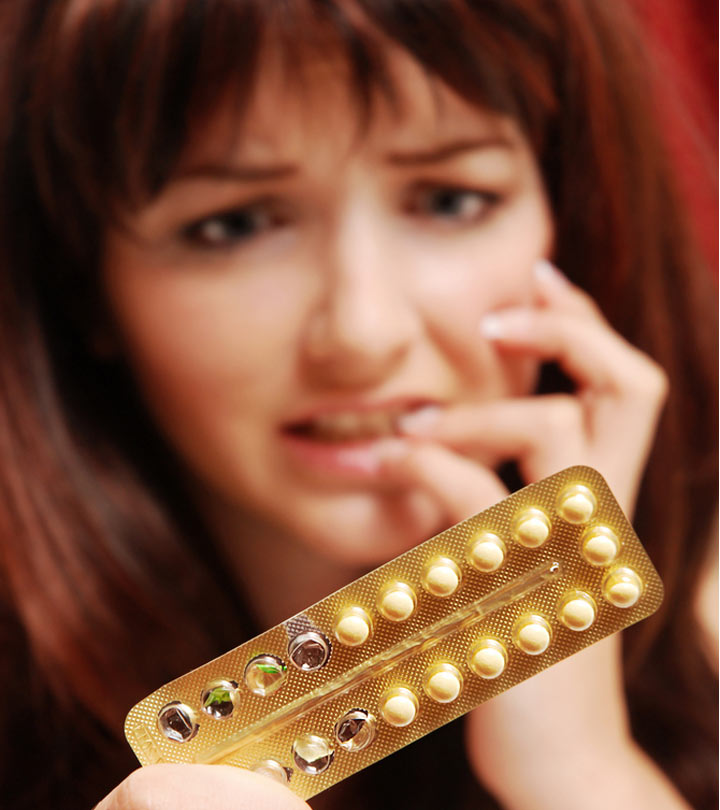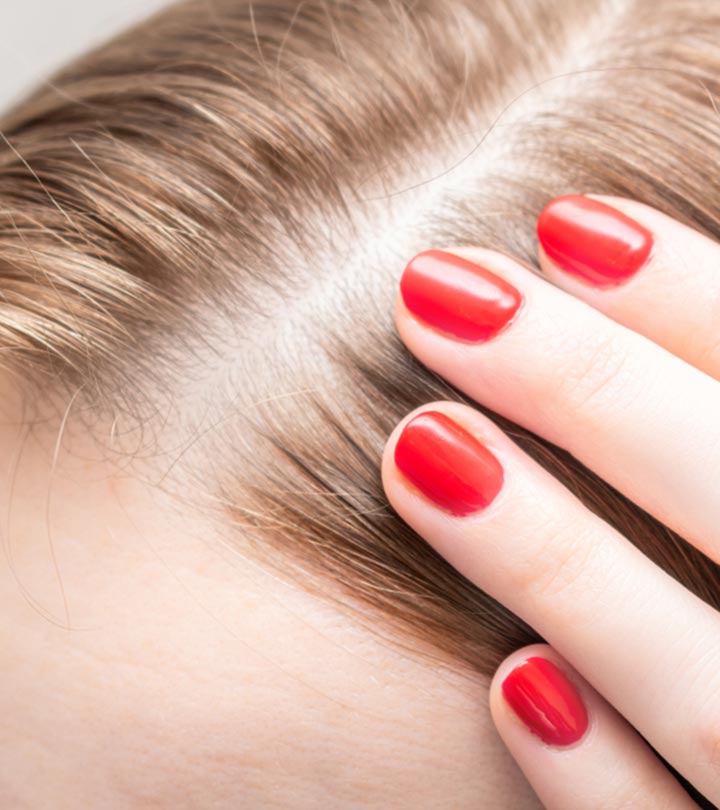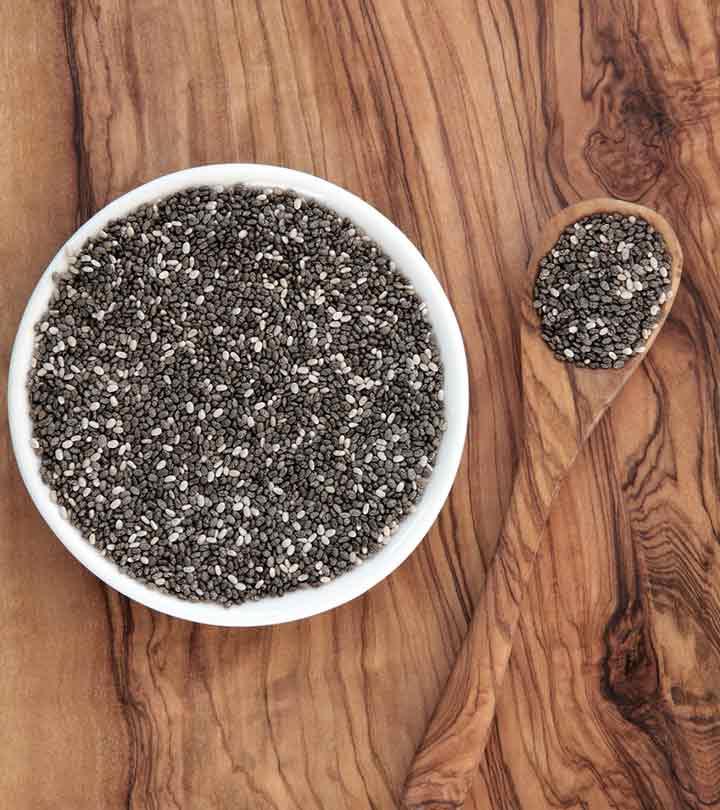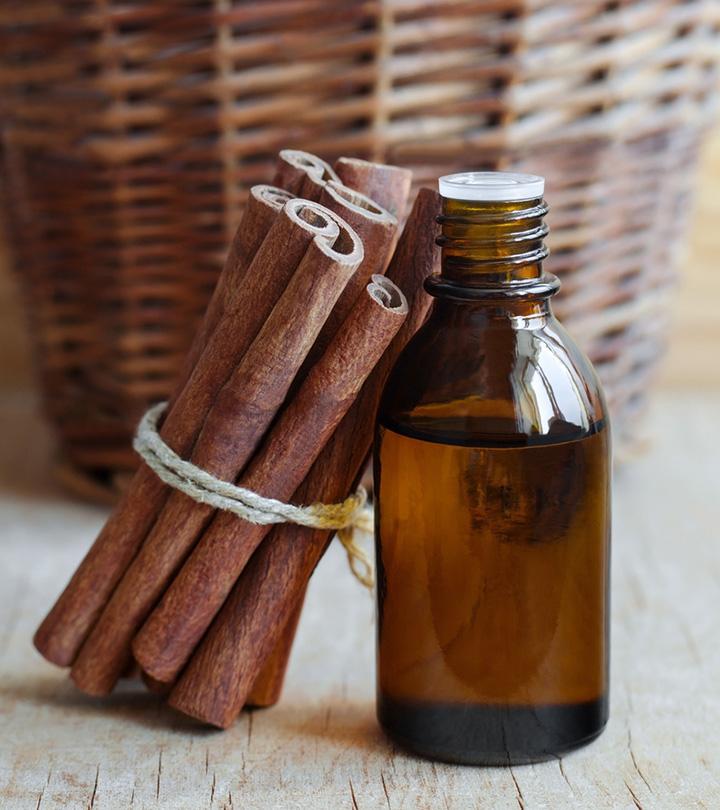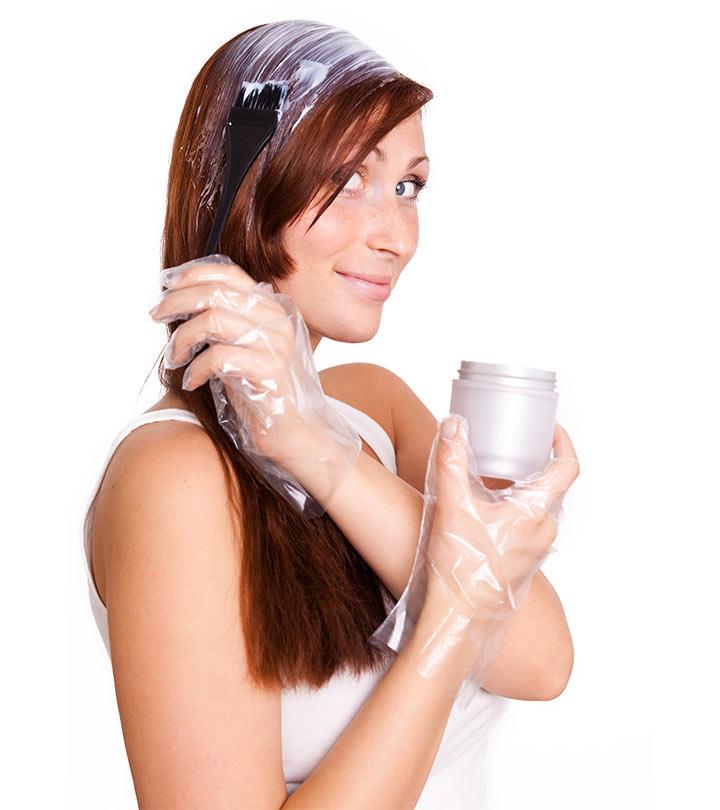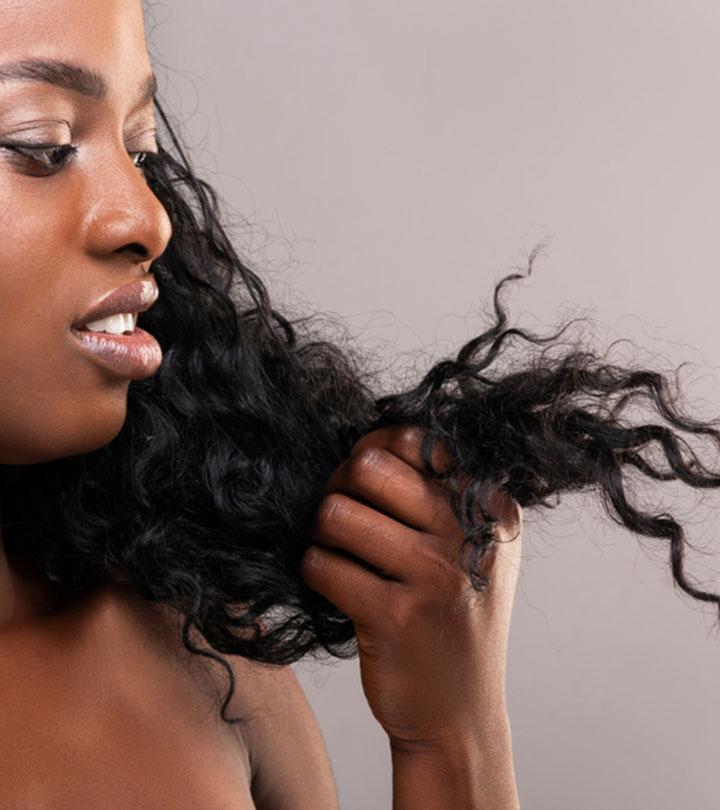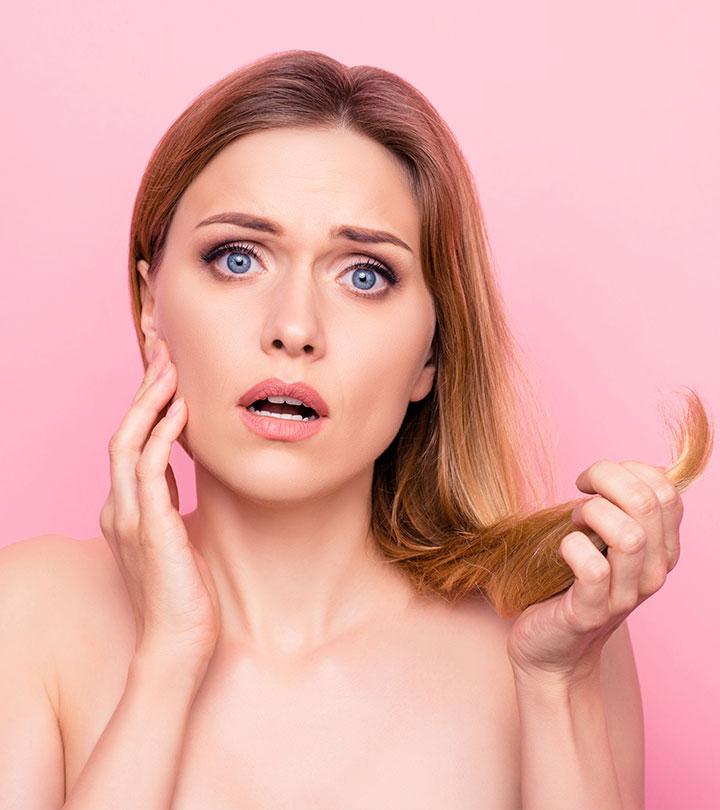Hair Sebum: Causes, Prevention & Tips To Control Excess Of It
Follow a few simple steps to help manage the natural oils in your tresses.
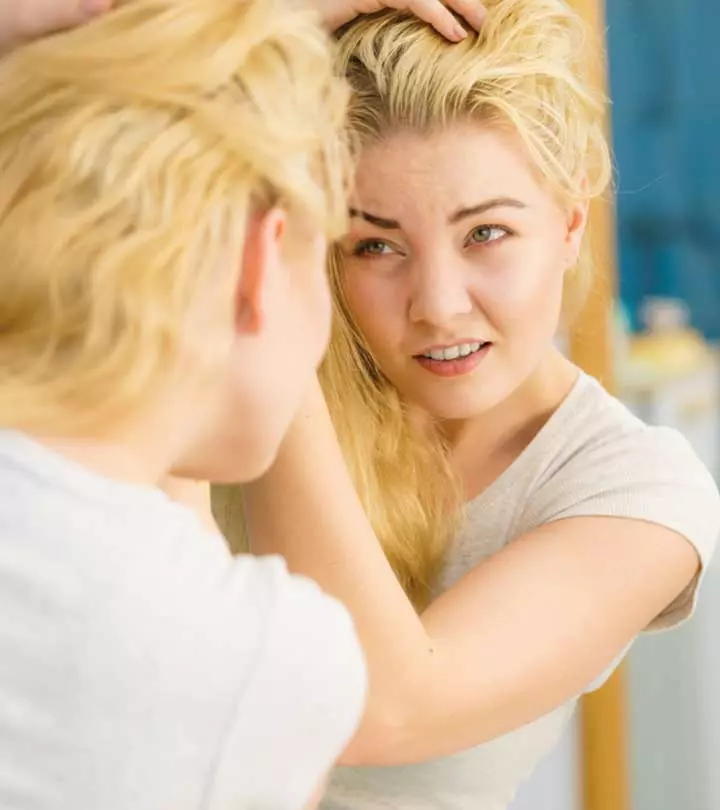
Sebum is a wax or natural oil secreted by the body’s sebaceous glands (on your skin and scalp). This oily substance is rich in fats, triglycerides, esters, and essential nutrients that help protect your hair from moisture loss. Hair sebum (or scalp sebum) also nourishes hair roots and enhances hair growth. Less scalp sebum can make your hair dry and brittle. Whereas excess sebum on your scalp can make your hair greasy and cause several problems.
Here, we have discussed the role of sebum in healthy scalp maintenance, the link between excess sebum and hair loss, and how you can prevent hair loss from sebum build-up. Keep reading to know more.
In This Article
What Is Sebum And Why Do We Need It?
Sebum is a waxy substance secreted by the sebaceous glands that moisturize your hair and scalp. This natural oil coats the hair strands to protect them and prevents dryness.
Sebum is a complex mixture of several lipids, such as triglycerides, fatty acids, cholesterol, squalene, and wax esters. These components have antimicrobial and anti-inflammatory properties and are essential for hair and scalp health (2). The sebaceous glands surround the hair follicles to nourish them and strengthen your hair.
Sebum is extremely crucial for maintaining your hair health. However, excess sebum production can damage your hair. Let’s find out how.
Can Too Much Sebum Damage My Hair?
Yes. Excess sebum secretion can lead to greasy-looking hair, scalp redness, and intense itching. Excess sebum also causes the proliferation of Malassezia, a fungus-like yeast that feeds on the fatty acids in sebum and causes dandruff (3). Too much sebum can cause issues like:
- Folliculitis (inflamed hair follicles)
- Seborrheic dermatitis
- Split ends
- Frizzy hair
- Hair loss
- Inflammation
Several factors can cause excess sebum production on the scalp. In the next section, we have explored the reasons behind sebum overproduction on the scalp.
What Causes Excessive Sebum Production On The Scalp?
1. Hormones
Androgens are hormones that regulate the production of sebum all over your body, including your scalp. They increase the size of sebaceous glands and stimulate excess sebum production. Progesterone – a hormone released by the ovaries increase sebum production in women (4).
2. Age
Your age can also affect sebum production. The sebaceous glands are active even before birth, offering lubrication and moisture to the baby’s skin. Sebum production is minimum in the early ages and peaks at adolescence, declining as you grow older (5). Hormonal changes during puberty may trigger excess sebum production.3. Environmental And Contributory Factors
Apart from the above primary causes, other factors may also affect sebum production. These include:
- Hormonal medications, such as birth control pills (6), (7)
- Product buildup
- Dead skin cell accumulation on the scalp
The sebaceous glands are present all over the body, and a majority of them are bound to the hair follicles (5). This is another reason behind the extra sebum on your scalp. This excess sebum buildup can also affect hair health and cause hair loss. Learn more in the next section.
Complications Of Excess Sebum In The Hair
Excess sebum production in the scalp can lead to various complications for hair health:
1. Greasy Hair: Excessive sebum can cause the hair to appear greasy, requiring more frequent washing.
2. Clogged Follicles: Sebum can accumulate and mix with dead skin cells, potentially clogging hair follicles and leading to conditions like dandruff or seborrheic dermatitis (8).
3. Hair Thinning: Excessive sebum may contribute to a buildup that weakens hair follicles, leading to hair breakage, thinning, or eventual hair loss.
4. Fungal Infections: The excess oil can create an environment conducive to fungal growth, resulting in scalp infections like fungal folliculitis.
Let us see in the next section how complications such as greasy hair, clogged follicles, and fungal infections can result in serious hair loss.
How Does Sebum Buildup Result In Hair Loss?
The sebum buildup on the scalp affects your hair health in multiple ways:
- Sebum accumulation clogs the hair follicles. This chokes the follicles, affecting hair health and eventually causing hair loss.
- Sebum accumulation in the follicles may clog them, trap bacteria and may cause folliculitis (commonly known as scalp acne) (9). This condition can result in scabs on the scalp that heal slowly and trigger hair loss (10).
Fortunately, you can manage sebum buildup on your scalp and control hair loss with the following tips and tricks.
Tips To Control Excessive Sebum Production
1. Birth Control And Hormone Medications
Oral contraceptives can reduce excess sebum production (11). Your doctor may even suggest a combination of contraceptives and other hormone medications to balance your sebum production.
2. Prescription Treatments
Excessive sebum production causes acne on the scalp or folliculitis. If not treated, it may cause pain, irritation, and hair loss. Oral isotretinoin can treat the condition (12). However, the dosage depends on the severity of your condition. Consult a doctor for the right dosage.
3. Diet Changes
Making simple dietary changes can reduce excess sebum. The consumption of excess fat and carbohydrates and foods with a high glycemic index may increase sebum production (13). Cut down on junk food, carbohydrates like white rice, pasta, noodles, white bread, and baked goodies to regulate sebum. Consume a balanced diet and follow a healthy lifestyle to maintain hair and scalp health.
4. Massage Your Scalp
Massaging your scalp can improve blood circulation (14). It can also prevent sebum accumulation. Gentle massaging may help distribute natural oils, reducing the chances of hair fall and infection.
Sunny, a beauty blogger, shares her personal experience dealing with sebum on the scalp. To address this issue, she advises, “I pour some olive oil out in a bowl, start by massaging it into the ends of my hair and then moving up. At the end, I use just the tiniest amount (think one teaspoon or even less), rub it between my palms, and smooth it over my scalp…As I said, it might take a little while for that sebum production to calm down, but in the meantime you’ll probably already notice improvement in your hair. It’s killing two birds with one stone (i)!”
5. Proper Hair Care
Following the right hair care practices can regulate excess sebum and keep the scalp healthy. Wash your hair thrice a week with a mild shampoo. According to a 2017 YouGov survey conducted with 5793 US adults, the frequency of hair-washing habits varies significantly. The results showed that 29% of the participants wash their hair every day, 31% shampoo 3 or 4 times per week, 26% wash 1 or 2 times per week, 11% wash less than once a week, and 3% were unsure about their hair washing frequency.
Avoid using harsh shampoos with SLS and alcohol. Also, use styling products in moderation. Always wash the scalp after you have used hairstyling products to minimize product buildup. Moreover, the chemicals in hair products weaken the moisture barrier and dry out your hair and scalp. The skin increases sebum production to protect the moisture barrier.
 Pro Tip
Pro TipHere are a few more tips to prevent sebum-related hair loss and keep your mane looking fresh and healthy.
How To Prevent Hair Loss From Sebum Buildup
1. Use Mild Hair Care Products
Pick products that are free of parabens, sulfates, silicons, alcohol, and other harmful chemicals. Make sure the shampoo suits your hair type and texture. Using products that do not meet your needs will only worsen the problem and increase sebum production and hair loss.
2. Skip Excess Hair Washing
Washing your hair seems like the most obvious thing to do to combat sebum buildup on the scalp. However, excessive washing can be counterintuitive in this case.
Frequent hair washing can strip the scalp of the oils and moisture it needs. This dries out the scalp and follicles, prompting the sebaceous glands to secrete more sebum.
 Quick Tip
Quick TipSebum is the natural oil produced by the sebaceous glands in the scalp. It coats the hair strands, keeping them moisturized and preventing dryness. It boosts scalp and hair health as it has anti-inflammatory and antimicrobial properties. However, excess sebum does not just make your hair look greasy. It can cause the scalp to become itchy and red, even leading to dandruff. It can also cause frizz, hair loss, inflammation, and split ends. Scroll up to read through the treatment options for excessive hair sebum. Remember to follow a regular hair care regimen to keep your hair clean and healthy!
Frequently Asked Questions
Can sebum cause hair loss?
Excess sebum can mix with buildup, dirt, and product residue and clog your hair follicles. This could lead to hair loss and damage.
Is dandruff sebum?
No, dandruff is not sebum. Excess sebum may lead to fungal infections like dandruff.
Key Takeaways
- Sebum is secreted by sebaceous glands and moisturizes the hair and scalp.
- Excess sebum makes hair greasy and triggers scalp redness, itching, and hair loss.
- Product buildup, aging, and hormones can affect sebum production.
- Scalp massage, a balanced diet, and a hair care routine can help manage sebum production.
Sebum is not all bad unless it starts to accumulate on your scalp. The following video shares details on what sebum is, and how to get rid of excess sebum to prevent hair loss. Check it out now!
Personal Experience: Source
StyleCraze's articles are interwoven with authentic personal narratives that provide depth and resonance to our content. Below are the sources of the personal accounts referenced in this article.
(i) Two counter-intuitive ways of dealing with oily scalp (with added benefits for your hair too!)https://mostlysunnybunny.wordpress.com/2012/03/02/two-counter-intuitive-ways-of-dealing-with-oily-scalp-with-added-benefits-for-your-hair-too/
References
Articles on StyleCraze are backed by verified information from peer-reviewed and academic research papers, reputed organizations, research institutions, and medical associations to ensure accuracy and relevance. Read our editorial policy to learn more.
- Thematic review series: Skin Lipids. Sebaceous gland lipids: friend or foe?
https://www.jlr.org/content/49/2/271.full - Sebaceous gland lipids
https://www.ncbi.nlm.nih.gov/pmc/articles/PMC2835893/ - The role of sebaceous gland activity and scalp microfloral metabolism in the etiology of seborrheic dermatitis and dandruff
https://pubmed.ncbi.nlm.nih.gov/16382662/ - Role of hormones and blood lipids in the pathogenesis of acne vulgaris in non-obese, non-hirsute females
https://www.ncbi.nlm.nih.gov/pmc/articles/PMC4252966/ - Dermatological problems of the puberty
https://www.ncbi.nlm.nih.gov/pmc/articles/PMC3834713/ - Hormonal Treatment of Acne in Women
https://www.ncbi.nlm.nih.gov/pmc/articles/PMC2923944/ - Should dermatologists prescribe hormonal contraceptives for acne?
https://pubmed.ncbi.nlm.nih.gov/19845722/ - Scalp Condition Impacts Hair Growth and Retention via Oxidative Stress
https://www.ncbi.nlm.nih.gov/pmc/articles/PMC6369642/ - Treatment Modalities for Acne
https://www.ncbi.nlm.nih.gov/pmc/articles/PMC6273829/ - The Diagnosis and Treatment of Hair and Scalp Diseases
https://www.ncbi.nlm.nih.gov/pmc/articles/PMC4908932/ - Effect of oral contraceptives on sebum excretion rate.
https://www.ncbi.nlm.nih.gov/pmc/articles/PMC1632706/ - Oral isotretinoin as the most effective treatment in folliculitis decalvans: a retrospective comparison of different treatment regimens in 28 patients
https://pubmed.ncbi.nlm.nih.gov/25712452/ - The relationship of diet and acne
https://www.ncbi.nlm.nih.gov/pmc/articles/PMC2836431/ - Effects for Scalp Blood Flow and Properties from Scalp Massage
https://www.researchgate.net/publication/305293718_Effects_for_Scalp_Blood_Flow_and_Properties_from_Scalp_Massage - How To Get Rid Of Oily Scalp And Hair Naturally: 16 Home Remedies
- 11 Reasons Your Hair Is So Oily And How To Fix It
- How Often Should You Wash Your Hair?
- How To Get Rid Of Scalp Buildup Effectively?
Read full bio of Dr. Shruti Chavan
Read full bio of Anjali Sayee
Read full bio of Monomita Chakraborty





